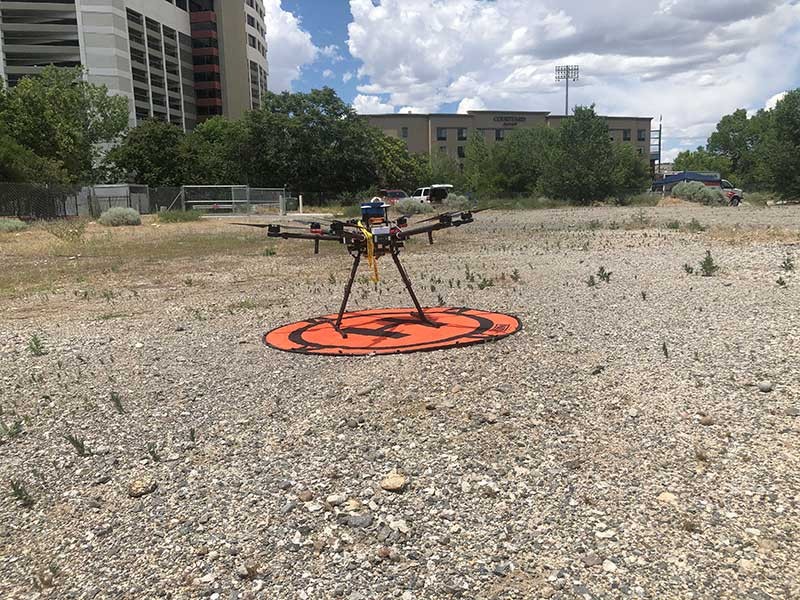USU Undergrad Participates in National FAA Drone Project
By Brittanie Carter |
Utah State University undergrad Hunter Hixon recently spent 10 days in Las Vegas, Nevada working with the FAA, NASA and other industry partners to help create safety regulations and programs for drone services in the future. Hixon works for AggieAir, a service center at the Utah Water Research Laboratory, that specializes in the development and use of small unmanned aerial systems for collecting scientific imagery and data.
In 2017, the FAA established the Unmanned Traffic Management Pilot Program (UPP), with the intent to support the implementation of expanded unmanned traffic management. As more businesses explore the possibility of utilizing drones for purposes like delivery, surveillance and remote sensing, there will be, and already is, a significant increase in drone traffic. UPP is providing practical data that will allow stakeholders to see and understand the level of investment needed to safely manage UAS traffic.
The UPP program selected three test locations and invited AggieAir to participate in the Las Vegas, Nevada demonstration led by the Nevada Institute for Autonomous Systems (NIAS). The project aims to develop UAV enterprise services using a cloud infrastructure. The cloud infrastructure will support expanded Unmanned Aerial Traffic Management, in the hopes that enterprise services will support the sharing of information between organizations that promotes cooperative separation and situational awareness.
Hixon, a senior at USU studying mechanical engineering and aerospace studies, is also a licensed Part 107 pilot, which allows him to fly small UAVs for work and business. From July 21 to August 2, Hixon flew AggieAir’s UAV Matrice 600 Pro, a multi-rotor drone, for more than 25 total flights. He was one of only three drone pilots operating their drones in a section of land next to the Las Vegas International Airport.
These flights demonstrated that multiple drone operations could be safely completed below 400 feet in the airspace where FAA air traffic services are not provided. The FAA also practiced a key element of unmanned traffic management called UVRs, or UAS volume reservations, where notifications of higher priority air or ground activities are shared with drone operators so they can determine if they need to land their drone or avoid a specific area.
Hixon commented on his participation in the project, saying, “The UPP project was an amazing opportunity to work with industry leaders as an undergraduate student. I enjoyed contributing to this research and participating in the integration of drones into the national airspace network that UPP successfully demonstrated. I am excited to see it’s continued development.”
AggieAir was proud to work with all of the Nevada UPP partner companies: Switch, Uber Elevate, AiRXOS a GE company, Avisight, Avision Robotics, ANRA Technologies, Praxis Aerospace Concepts, Telesis Communications Se rvices, RelmaTech, the City of Las Vegas, City of Henderson, City of Reno, Town of Searchlight and Nevada State College.
WRITER
Brittanie Carter
Public Relations
Utah Water Research Lab
brittanie.carter@usu.edu
CONTACT
Cal Coopmans
Director
AggieAir
435-764-4579
cal.coopmans@usu.edu
TOPICS
Engineering 337stories Hands-on Learning 211stories Aerospace 80stories Drones 14storiesComments and questions regarding this article may be directed to the contact person listed on this page.










